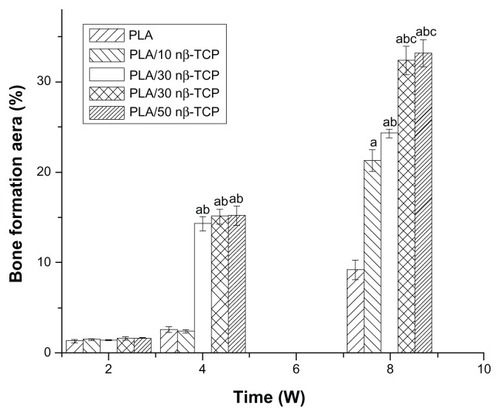Figures & data
Table 1 PLA/β-TCP composite scaffold
Figure 1 X-ray diffraction patterns of micro-sized β-TCP particles and as prepared nano-sized β-TCP particles.
Abbreviation: β-TCP, β-tricalcium phosphate.
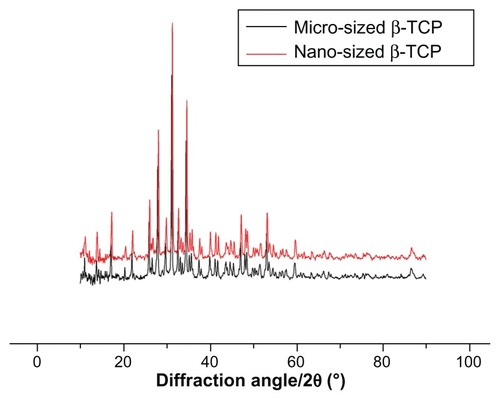
Figure 2 TEM images of dried particles (A and B) and size distribution of nano-sized β-TCP particles (C).
Abbreviations: TEM, transmission electron microscopy; β-TCP, β-tricalcium phosphate.

Figure 3 SEM micrographs of the pores on the external surface of five composite scaffolds at 0, 8, and 26 weeks: pure PLA, PLA/10 nβ-TCP, PLA/30 mβ-TCP, PLA/30 nβ-TCP, and PLA/50 nβ-TCP scaffold.
Note: Scale bars: 300 μm.
Abbreviations: SEM, scanning electron microscopy; PLA, poly (lactic acid); nβ-TCP, nano-sized β-tricalcium phosphate; mβ-TCP, micro-sized β-tricalcium phosphate; W, weeks.
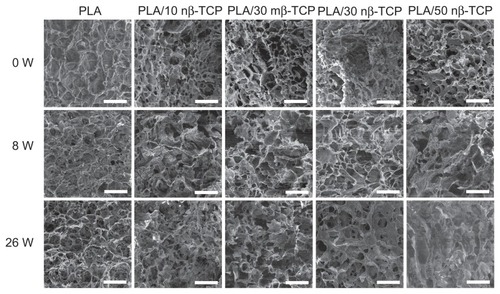
Figure 4 Porosity changes of five composite scaffolds over a 26-week period of hydrolysis.
Abbreviations: PLA, poly (lactic acid); nβ-TCP, nano-sized β-tricalcium phosphate; mβ-TCP, micro-sized β-tricalcium phosphate; W, weeks.
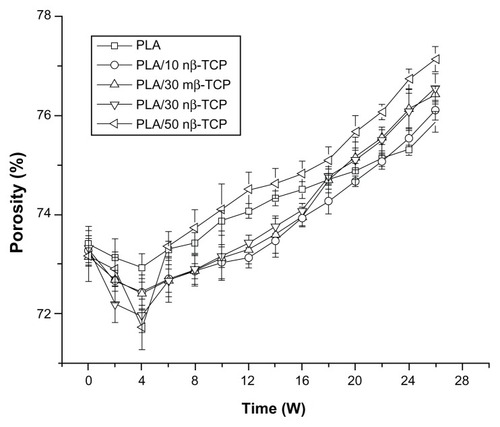
Figure 5 Weight loss of porous scaffolds with different initial ratios of nβ-TCP.
Abbreviations: PLA, poly (lactic acid); nβ-TCP, nano-sized β-tricalcium phosphate; mβ-TCP, micro-sized β-tricalcium phosphate; W, weeks.
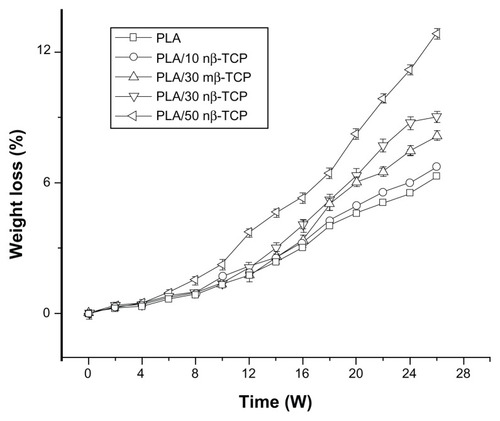
Figure 6 Changes in compressive strength of porous scaffolds with different initial ratios of nβ-TCP.
Abbreviations: PLA, poly (lactic acid); nβ-TCP, nano-sized β-tricalcium phosphate; mβ-TCP, micro-sized β-tricalcium phosphate; W, weeks.
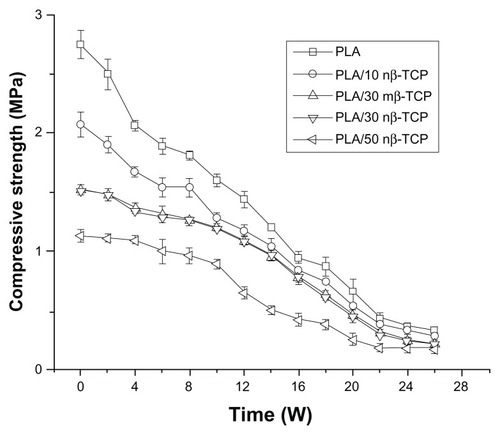
Figure 7 Changes in pH of PBS solution used for in vitro degradation of composite scaffolds at 37°C.
Abbreviations: PBS, phosphate-buffered saline; PLA, poly (lactic acid); nβ-TCP, nano-sized β-tricalcium phosphate; mβ-TCP, micro-sized β-tricalcium phosphate; W, weeks.
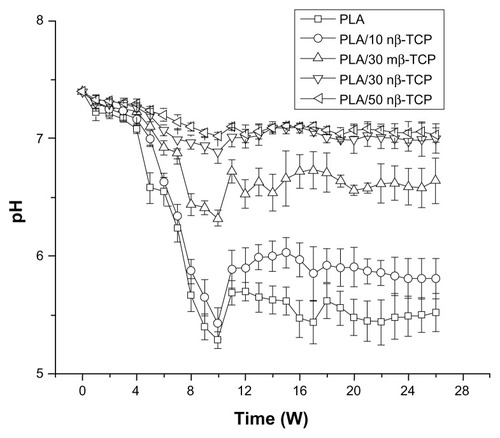
Figure 8 H&E and OCN immunohistochemistry stain at 8 weeks demonstrating new bone and materials in each of the five groups: pure PLA, PLA/10 nβ-TCP, PLA/30 mβ-TCP, PLA/30 nβ-TCP, and PLA/50 nβ-TCP scaffolds.
Notes: B indicates new bone. M indicates materials. Green arrow indicates OCN-positive cells, red arrow indicates negative cells. Scale bars: 20 μm.
Abbreviations: H&E, hematoxylin and eosin; OCN, anti-osteocalcin; PLA, poly (lactic acid); nβ-TCP, nano-sized β-tricalcium phosphate; mβ-TCP, micro-sized β-tricalcium phosphate.

Figure 9 Graph of neo-bone area from rhBMP-2 loaded scaffolds at 2, 4, and 8 weeks.
Notes: Significance compared to pure PLA (a), PLA/10 nβ-TCP (b), PLA/30 mβ-TCP (c), PLA/30 nβ-TCP (d), PLA/50 nβ-TCP scaffolds (e).
Abbreviations: rhBMP-2, recombinant human bone morphogenetic protein-2; OCN, anti-osteocalcin; PLA, poly (lactic acid); nβ-TCP, nano-sized β-tricalcium phosphate; mβ-TCP, micro-sized β-tricalcium phosphate.
